
- Display 15 Products per page
-

Child Death Review in Canada: A National Scan
Report, 2016
This report provides information about current child death review processes that exist in each of the provinces and territories in Canada, based on interviews with key informants in each region. Particular attention is paid to those provinces with a coordinated, multi-disciplinary, provincial child death review process. Recommendations and advice for others initiating a child death review process are also included.
SKU: 2-460 -
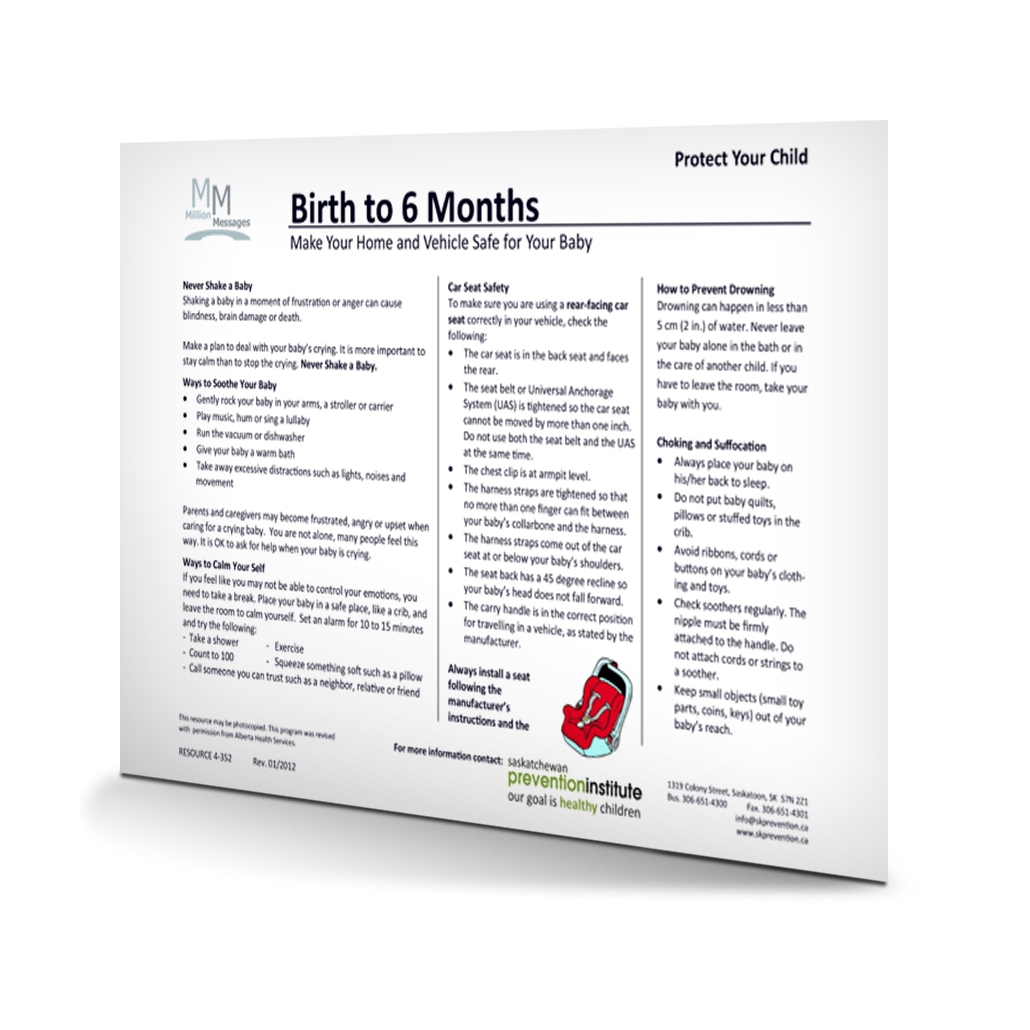
Million Messages: Birth to 6 Months
Information Card, 2012
The Million Messages program is the development of a comprehensive plan to standardize messages given to parents about injury by public or community health nurses. Each of these messages is simple, consistent, routine, and targets an issue that affects children at specific stages in their growth and development. The messages are developed for visits during the prenatal, newborn, two months, four months, six months, twelve months, eighteen months, and preschool periods. This program was developed by Capital Health in Alberta.
SKU: 4-352 -

Abusive Head Trauma (Shaken Baby Syndrome)
Fact Sheet, Revised 2019
Explains what abusive head trauma is, including how and why it happens, the long-term effects, and how it can be prevented. Aimed at health professionals and service providers who work with families. For information aimed at caregivers, see When Your Baby Can’t Stop Crying (resource 4-902).
SKU: 4-900 -

Poison Prevention Guide
Guide and Manual, 2021
This guide is for anyone who works with children and their families, and can be used to educate children and families about home and personal safety related to poisoning prevention. There are activities for both children and adults in the guide. There are activity pages at the end of the guide that can be photocopied.
SKU: 4-906 -
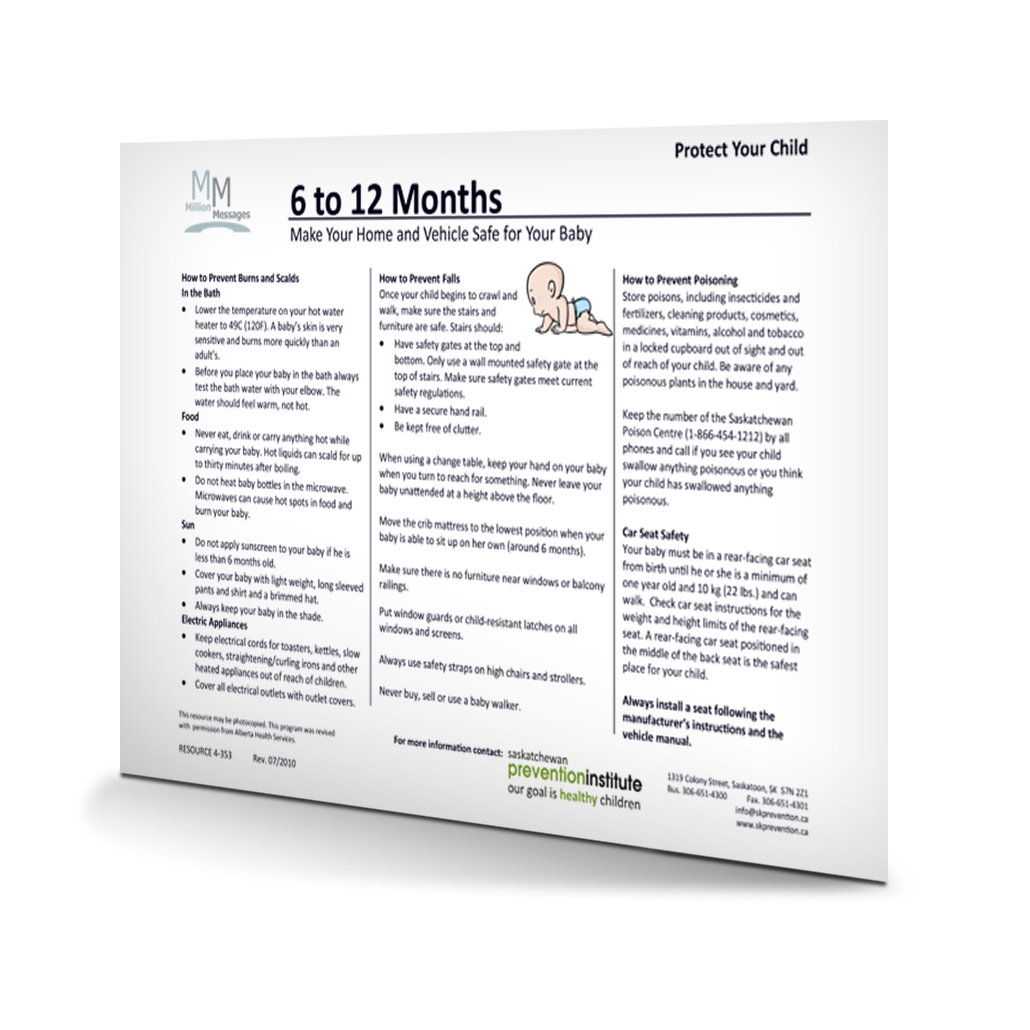
Million Messages: 6 to 12 Months
Information Card, 2012
The Million Messages program is the development of a comprehensive plan to standardize messages given to parents about injury by public or community health nurses. Each of these messages is simple, consistent, routine, and targets an issue that affects children at specific stages in their growth and development. The messages are developed for visits during the prenatal, newborn, two months, four months, six months, twelve months, eighteen months, and preschool periods. This program was developed by Capital Health in Alberta.
SKU: 4-353 -

Child Injury Prevention Programming and Action Guide
Guide and Manual, 2017
The Child Injury Prevention Programming and Action Guide provides information about the importance of injury prevention, why children are more at risk of injury, and how to develop and implement an injury prevention strategy. This resource was developed for community-based programs to use in their work with families to prevent child injury, but it will be of interest to anyone who works with caregivers and children. Adapted with permission from Parachute Canada’s Introduction to Child Injury Prevention (ICIP) online resource.
SKU: 4-008 -

Child Injury Prevention Demonstration Activities
Guide, 2020
This activity guide was developed for community leaders, educators, and other professionals to use in their work with families to help prevent child injury. The ten hands-on activities included in this guide demonstrate the risk to children and youth from common causes of injury. The causes of injury addressed in the guide include burns, choking, poisoning, scalds, traumatic brain injury, cycling-related injury, drowning, and motor-vehicle injury. Each activity includes a list of the materials, the process, discussion points, and safety tips. Additional materials such as fact sheets, images, and videos are also listed for each activity.
SKU: 4-010 -

Million Messages: Program
Information Card, 2012
The Million Messages program is the development of a comprehensive plan to standardize messages given to parents about injury by public or community health nurses. Each of these messages is simple, consistent, routine, and targets an issue that affects children at specific stages in their growth and development. The messages are developed for visits during the prenatal, newborn, two months, four months, six months, twelve months, eighteen months, and preschool periods. This program was developed by Capital Health in Alberta.
SKU: 4-357 -
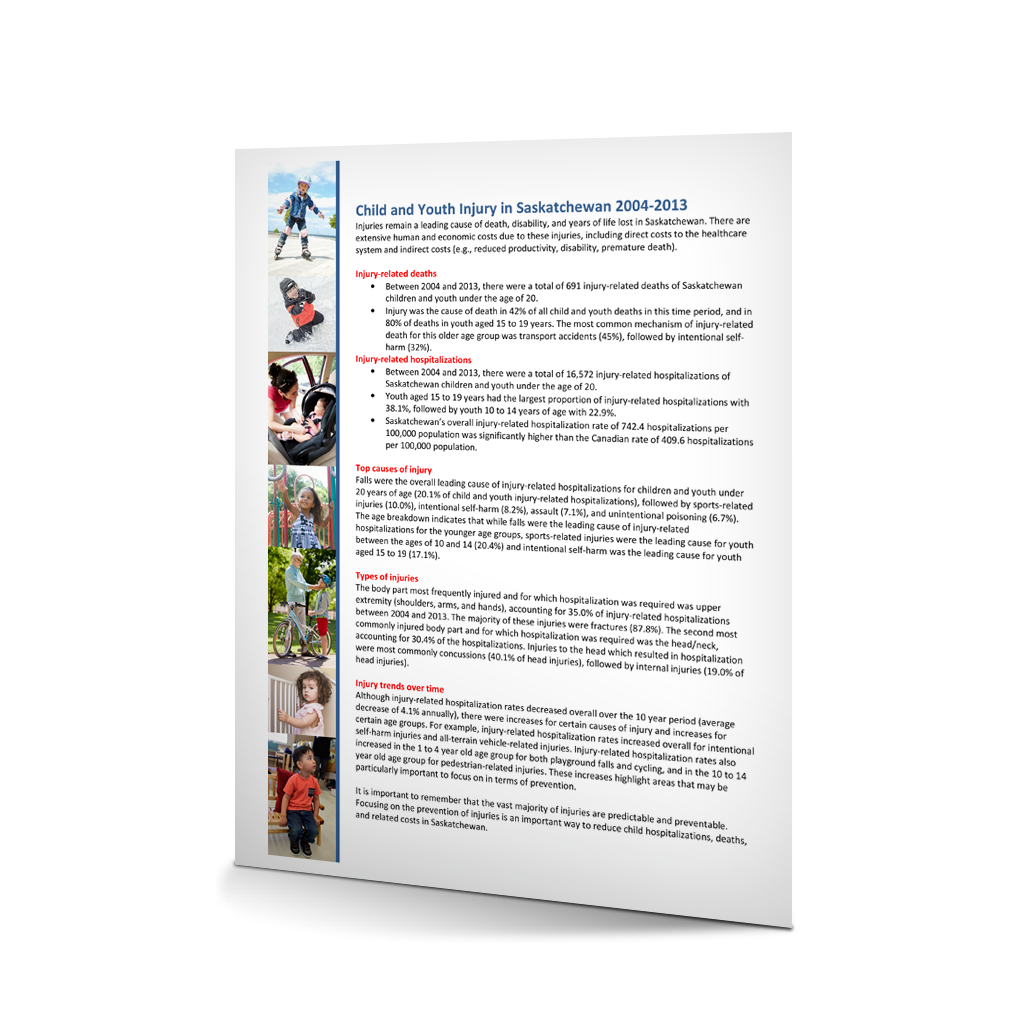
Child and Youth Injury in Saskatchewan 2004-2013 Summary
Report, 2017
This summary is based on the report, “Child and Youth Injury in Saskatchewan 2004-2013” (resource 4-007). It provides information about injury-related deaths and hospitalizations of Saskatchewan children and youth, including the top causes of injury-related hospitalizations and types of injuries.
SKU: 4-009 -
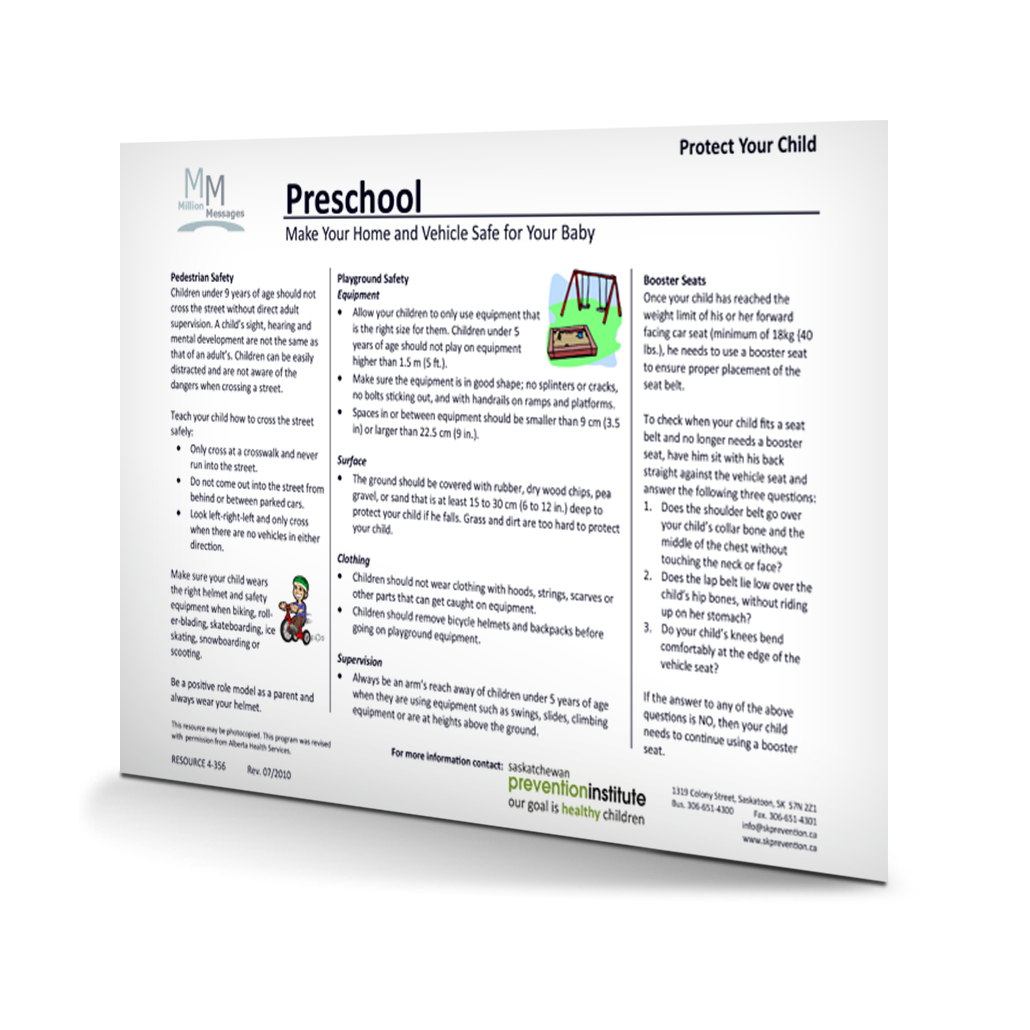
Million Messages: Preschool
Information Card, 2012
The Million Messages program is the development of a comprehensive plan to standardize messages given to parents about injury by public or community health nurses. Each of these messages is simple, consistent, routine, and targets an issue that affects children at specific stages in their growth and development. The messages are developed for visits during the prenatal, newborn, two months, four months, six months, twelve months, eighteen months, and preschool periods. This program was developed by Capital Health in Alberta.
SKU: 4-356 -
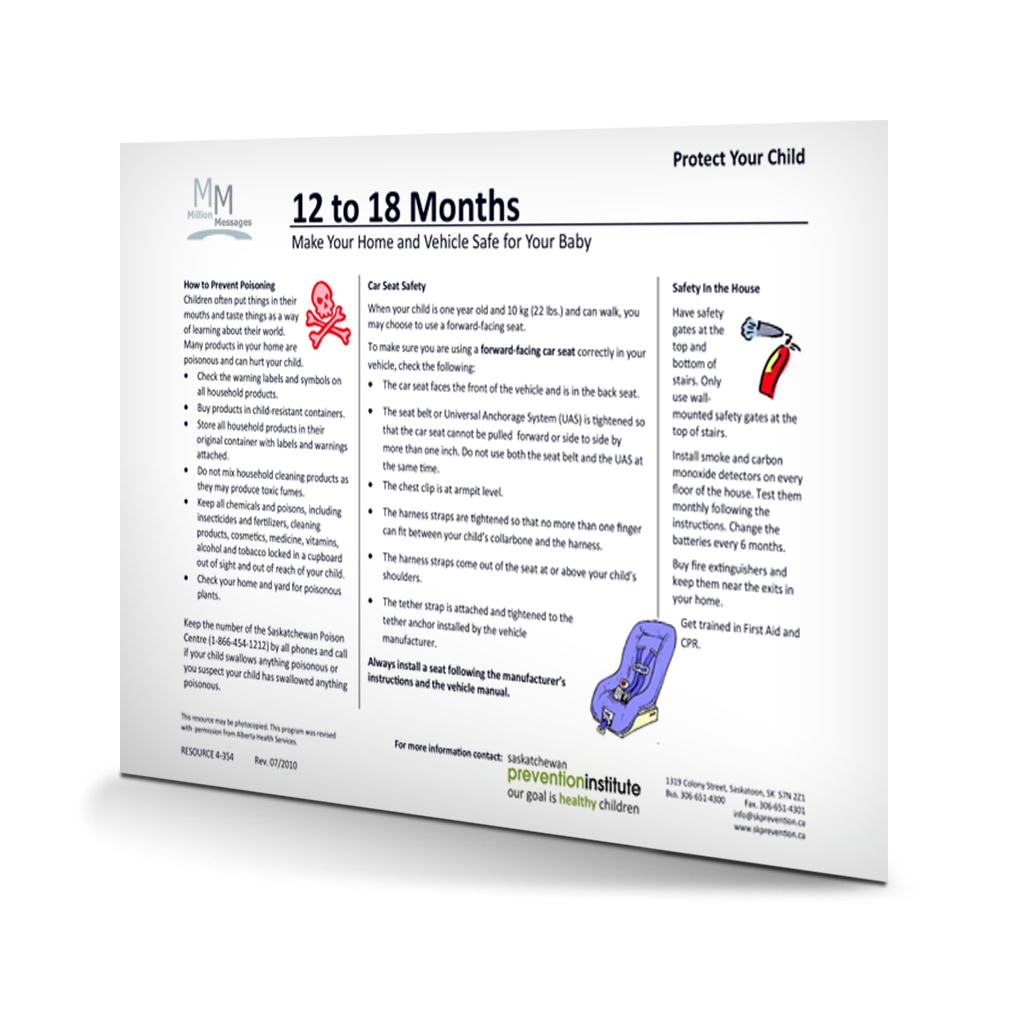
Million Messages: 12 to 18 Months
Information Card, 2012
The Million Messages program is the development of a comprehensive plan to standardize messages given to parents about injury by public or community health nurses. Each of these messages is simple, consistent, routine, and targets an issue that affects children at specific stages in their growth and development. The messages are developed for visits during the prenatal, newborn, two months, four months, six months, twelve months, eighteen months, and preschool periods. This program was developed by Capital Health in Alberta.
SKU: 4-354 -

Preventing Injuries
Fact Sheet, 2010
Injuries are the leading cause of death for Saskatchewan children. This fact sheet defines the differences between injuries and “accidents,” outlines the causes of injuries, and identifies the different types of strategies that can be used to prevent injuries.
SKU: 4-003 -

Your Activity Guide for Teaching Bike Safety Skills
Guide, Revised 2020
This booklet is for any individual to use in educating children and youth about bicycle safety. These nine activities are designed for teaching bike safety skills for children ages 5 – 12. Included are speaking notes, notes to the educator, items required for the activities, and tools to support the activity (e.g., diagrams and photos). This booklet will help individuals focus on the importance of safe cycling through education.
SKU: 4-217 -
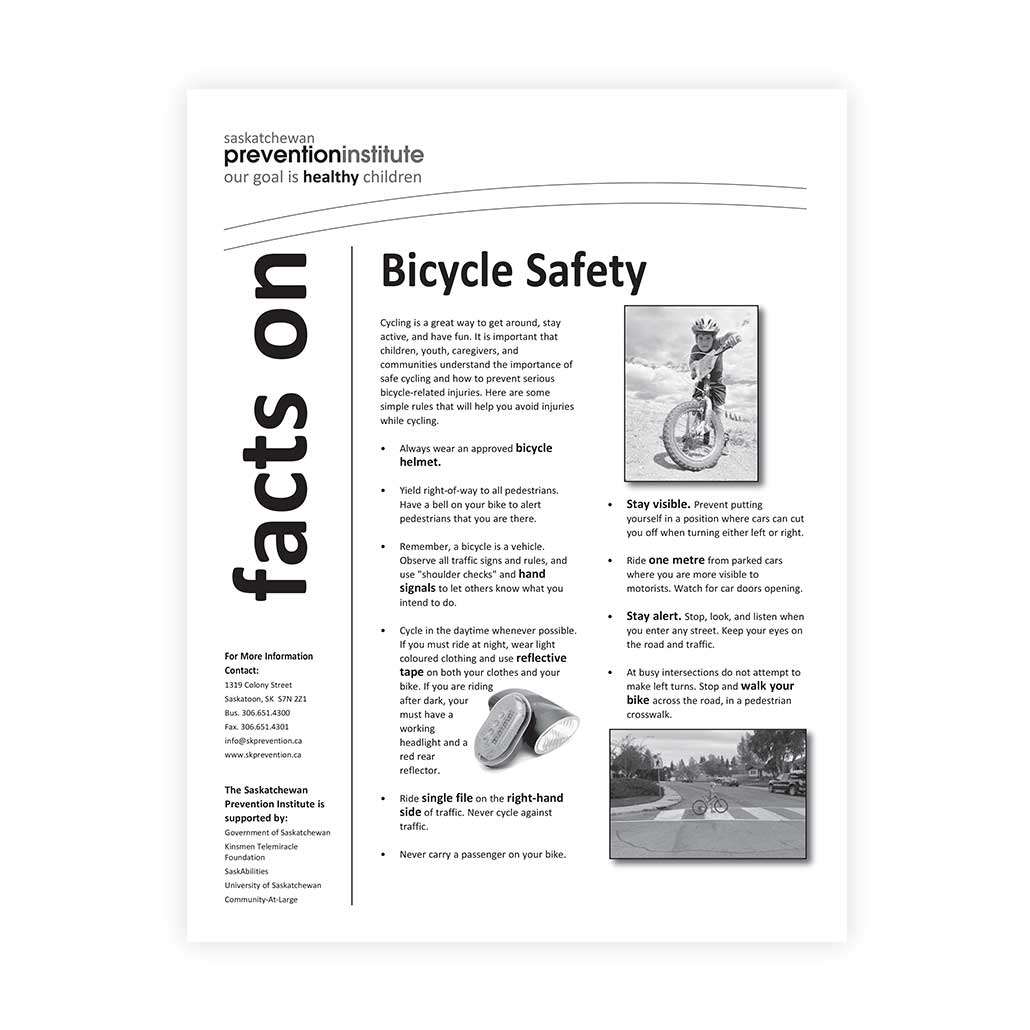
Bicycle Safety
Fact Sheet, Revised 2022
The best way to avoid injury while cycling is to follow safe practices. This fact sheet outlines some rules of the road and general tips to help you avoid injury while cycling. This resource is ideal for all cyclists.
SKU: 4-202 -
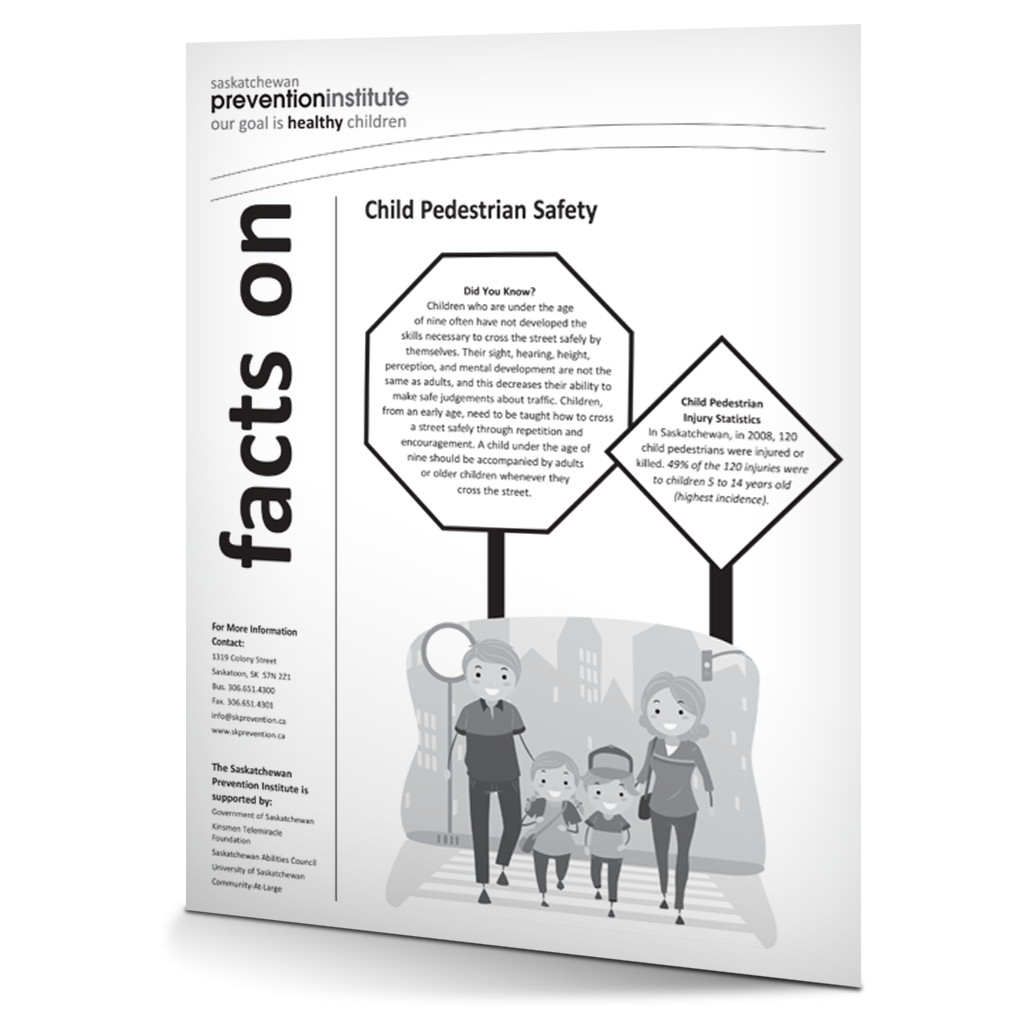
Child Pedestrian Safety
Fact Sheet, Revised 2015
This fact sheet provides tips and facts on child pedestrian safety.
SKU: 4-021
